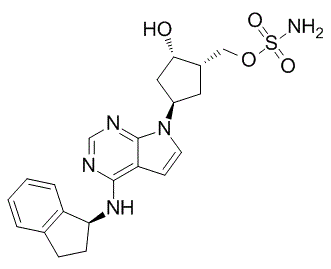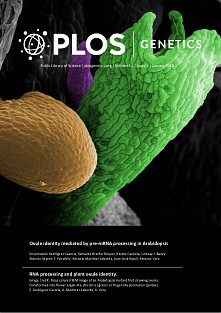All AbMole products are for research use only, cannot be used for human consumption.

Pevonedistat (MLN4924) is a potent and selective, first-in-class inhibitor of NEDD8-activating enzyme (NAE) for cancer therapy. MLN4924 (3 μM) inhibits overall protein turnover by <9% in HCT-116 cells. MLN4924 induces an alternative mechanism of action. Treatment of ABC DLBCL cells with MLN4924 resulted in rapid accumulation of pIkappaBalpha, decrease in nuclear p65 content, reduction of nuclear factor-kappaB (NF-kappaB) transcriptional activity, and G(1) arrest, ultimately resulting in apoptosis induction, events consistent with potent NF-kappaB pathway inhibition. Expression of UBA3 A171T is sufficient to decrease MLN4924 sensitivity of naive HCT116 cells, indicating that it is a dominant suppressor of MLN4924-mediated cell death.
In vivo administration of Pevonedistat (MLN4924) to mice bearing human xenograft tumors of ABC- and GCB-DLBCL blocked NAE pathway biomarkers and resulted in complete tumor growth inhibition. In primary human tumor models of ABC-DLBCL, Pevonedistat (MLN4924) treatment resulted in NF-kappaB pathway inhibition accompanied by tumor regressions.

PLOS Genetics. 2018 Jan 25;14(1):e1007165.
CRL4 antagonizes SCFFbxo7-mediated turnover of cereblon and BK channel to regulate learning and memory
Pevonedistat purchased from AbMole
| Cell Experiment | |
|---|---|
| Cell lines | HCT-116 cells |
| Preparation method | Cell viability assay. Cell suspensions were seeded at 3,000–8,000 cells per well in 96-well culture plates and incubated overnight at 37℃. Compounds were added to the cells in complete growth media and incubated for 72 h at 37℃. Cell number was quantified using the ATPlite assay (PerkinElmer). |
| Concentrations | 0~100µM |
| Incubation time | 72h |
| Animal Experiment | |
|---|---|
| Animal models | Female athymic NCR Mice bearing HCT-116 xenografts |
| Formulation | 10% cyclodextrin |
| Dosages | 10,30 or 60mg/kg |
| Administration | subcutaneously |
| Molecular Weight | 443.52 |
| Formula | C21H25N5O4S |
| CAS Number | 905579-51-3 |
| Solubility (25°C) | DMSO ≥ 50 mg/mL |
| Storage |
Powder -20°C 3 years ; 4°C 2 years In solvent -80°C 6 months ; -20°C 1 month |
| Related NEDD8-activating Enzyme Products |
|---|
| ZM223
ZM223 is a potent non-covalent NEDD8 activating enzyme (NAE) inhibitor, orally active. |
| ZM223 hydrochloride
ZM223 hydrochloride is a potent, orally active, non-covalent NEDD8 activating enzyme (NAE) inhibitor. |
| NAE-IN-M22
NAE-IN-M22 is a potent, selective, and reversible inhibitor of NEDD8-activating enzyme (NAE) in the micromolar range. In addition, NAE-IN-M22 inhibits the growth of various cancer cells and induces apoptosis in A549 cells. |
| TAS4464 hydrochloride
TAS4464 (hydrochloride) is a highly potent and selective inhibitor of NEDD8 activating enzyme (NAE), with an IC50 of 0.955 nM. |
| Pevonedistat hydrochloride
Pevonedistat hydrochloride (MLN4924 hydrochloride) is a potent and selective NEDD8-activating enzyme (NAE) inhibitor, with an IC50 of 4.7 nM. |
All AbMole products are for research use only, cannot be used for human consumption or veterinary use. We do not provide products or services to individuals. Please comply with the intended use and do not use AbMole products for any other purpose.


Products are for research use only. Not for human use. We do not sell to patients.
© Copyright 2010-2024 AbMole BioScience. All Rights Reserved.
